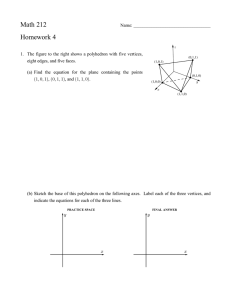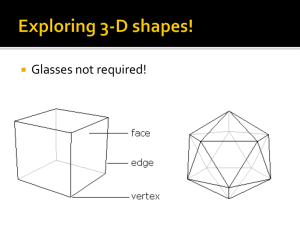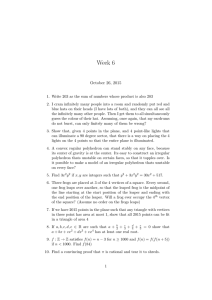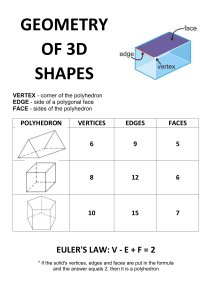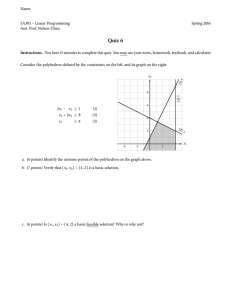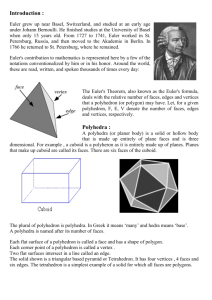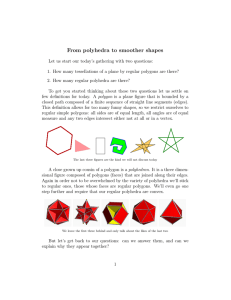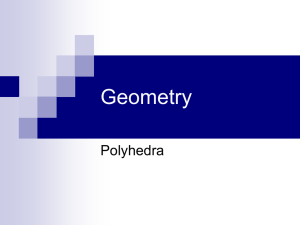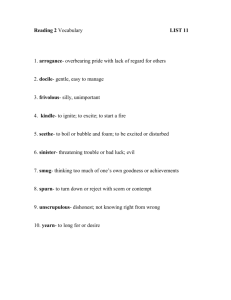MTH 232 Section 9.3 Figures in Space
advertisement
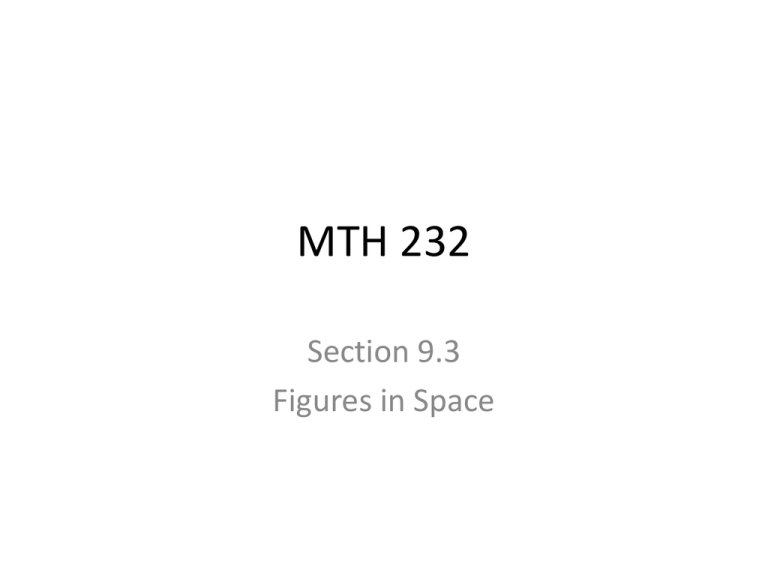
MTH 232 Section 9.3 Figures in Space From 2-D to 3-D • In the previous section we examined curves and polygons in the plane (all the points in the plane and its interior and exterior were coplanar). • These figures had only two dimensions (for example, a rectangle has length and width). • In this section we expand our discussion to curves and figures that cannot be contained within a flat surface. • In the absence of having actual models, these three-dimensional figures are often drawn on a two dimensional surface. The Sphere The Cylinder The Cone The Polyhedron • A polyhedron is a simple closed surface formed from planar polygonal regions. • The polyhedron is to space what the polygon is to the plane. • Polyhedra have faces, vertices, and edges. The Pyramid The Prism Euler’s Formula • In 1752, Leonhard Euler discovered that the number of faces (F), the number of vertices (V), and the number of edges (E) are related to one another: V F E2 Revised Homework • 2 a, b, d ,e, f; 3; 12 a, b; 13; 17 (e-mail them to me); 21; 23; 36; 37; 38

